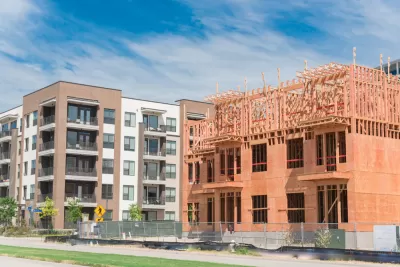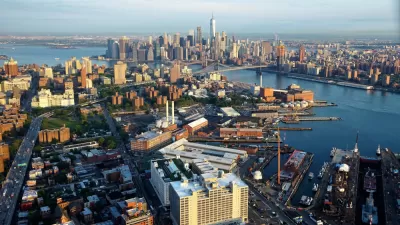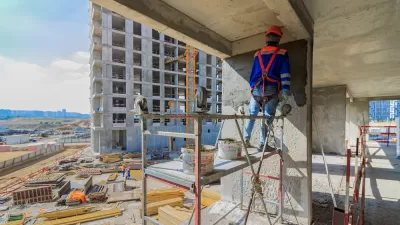A study that made the rounds as a working paper at the beginning of 2019 has now been published in a peer-reviewed journal.

A study years in the making has added a new reference in the debate about the effects of large new apartment developments on low-income neighborhoods located nearby.
The study, titled "Local Effects of Large New Apartment Buildings in Low-Income Areas," was published by The Review of Economics and Statistics on May 6, but the research first attracted attention it the beginning of 2019. Planetizen blogger Michael Lewyn introduced the research findings (in what was then a working paper) as potential ammunition for the YIMBY response to rising housing costs in large cities with restrictive zoning codes and low amounts of residential development.
Now published in a peer-reviewed journal, the research finalizes its findings, as summarized in the study's abstract: "New buildings decrease rents in nearby units by about 6 percent relative to units slightly farther away or near sites developed later, and they increase in-migration from lowincome [sic] areas."
The researchers argue that new apartment developments achieve price reductions in nearby neighborhoods by absorbing high-income households and increasing local housing stock. "If buildings improve nearby amenities, the effect is not large enough to increase rents. Amenity improvements could be limited because most buildings go into already-changing neighborhoods, or buildings could create disamenities such as congestion," reads the abstract.
For more of the latest on the subject, researchers at the University of California, Los Angeles recently published a survey of recent research on the consequences of new development for local housing markets.
FULL STORY: Local Effects of Large New Apartment Buildings in Low-Income Areas

Study: Maui’s Plan to Convert Vacation Rentals to Long-Term Housing Could Cause Nearly $1 Billion Economic Loss
The plan would reduce visitor accommodation by 25,% resulting in 1,900 jobs lost.

North Texas Transit Leaders Tout Benefits of TOD for Growing Region
At a summit focused on transit-oriented development, policymakers discussed how North Texas’ expanded light rail system can serve as a tool for economic growth.

Why Should We Subsidize Public Transportation?
Many public transit agencies face financial stress due to rising costs, declining fare revenue, and declining subsidies. Transit advocates must provide a strong business case for increasing public transit funding.

How to Make US Trains Faster
Changes to boarding platforms and a switch to electric trains could improve U.S. passenger rail service without the added cost of high-speed rail.

Columbia’s Revitalized ‘Loop’ Is a Hub for Local Entrepreneurs
A focus on small businesses is helping a commercial corridor in Columbia, Missouri thrive.

Invasive Insect Threatens Minnesota’s Ash Forests
The Emerald Ash Borer is a rapidly spreading invasive pest threatening Minnesota’s ash trees, and homeowners are encouraged to plant diverse replacement species, avoid moving ash firewood, and monitor for signs of infestation.
Urban Design for Planners 1: Software Tools
This six-course series explores essential urban design concepts using open source software and equips planners with the tools they need to participate fully in the urban design process.
Planning for Universal Design
Learn the tools for implementing Universal Design in planning regulations.
City of Santa Clarita
Ascent Environmental
Institute for Housing and Urban Development Studies (IHS)
City of Grandview
Harvard GSD Executive Education
Toledo-Lucas County Plan Commissions
Salt Lake City
NYU Wagner Graduate School of Public Service





























